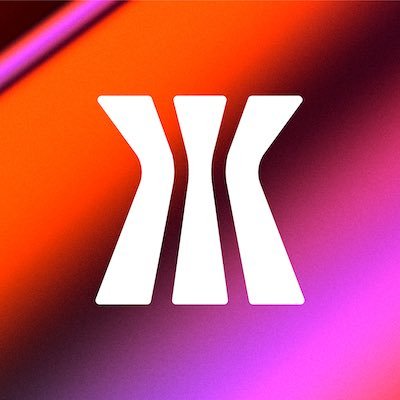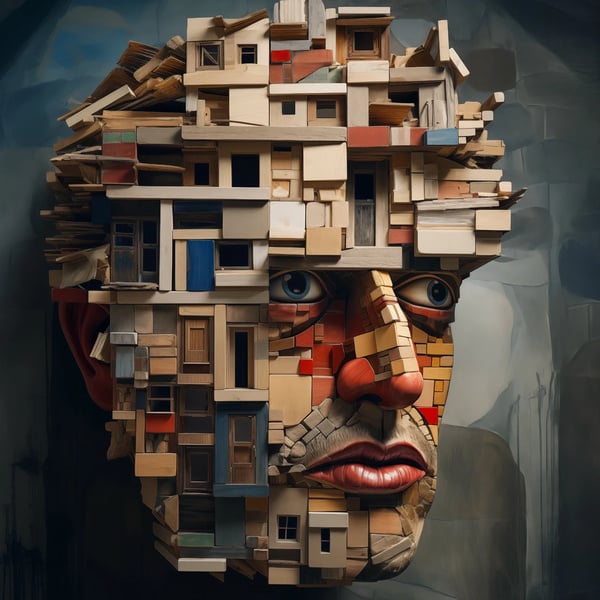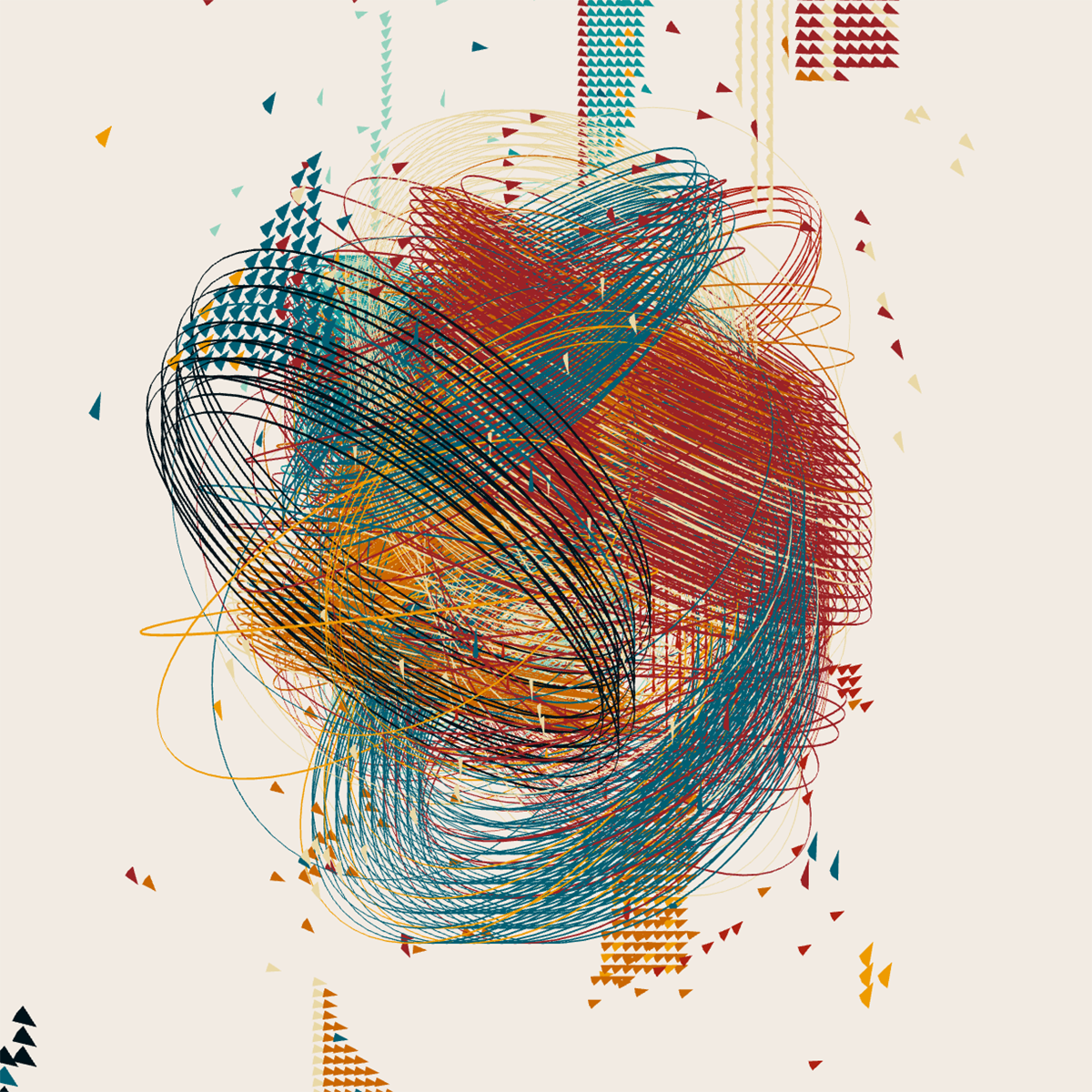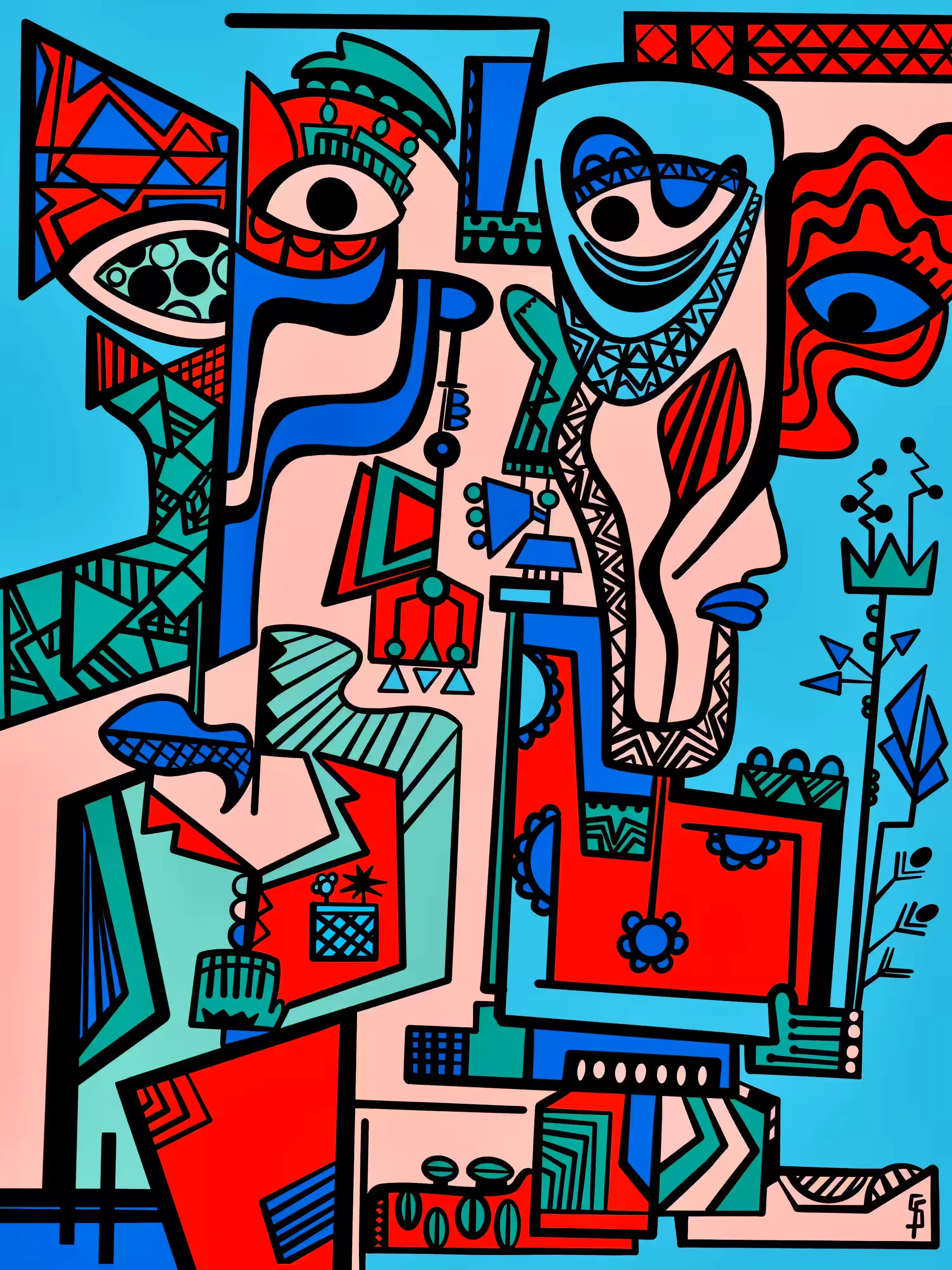AI is revolutionizing digital art, utilising AI as a tool, artists craft innovative, thought-provoking works that blend human vision with machine-assisted techniques. By using AI, artists can push the boundaries of what's possible in digital art. Some illustrious example include, AI Art is Not Art by Claire Silver which has had over 1400 ETH volume, Be a Fisherman by Artifishal sold out on Gamma just last week, and renowned media artist Refik Anadol whom describes AI as an extension of his mind, let’s meet five Gamma Partner Artists who employ AI in their art creation.
Rocketgirl
Rocketgirl, has embraced AI as a tool to expand her artistic practice and push the boundaries of her creativity.
For Rocketgirl, the decision to integrate AI into her work stemmed from a desire to keep her practice fresh by exploring all possible techniques and technological advancements. "I felt that to keep my practice fresh, I had to explore all the possibilities and techniques incorporating tech," she explains.
Her workflow is a carefully crafted blend of AI and traditional artistic skills. "I use AI to ideate and plan, for elements of collage, and to upscale final artworks, both physical and digital," she shares. The process is dynamic and allows her to refine her artistic vision in innovative ways.
Among the various AI tools available, Rocketgirl primarily relies on Krea due to its model training feature and high-quality generation. Additionally, she uses Topaz for upscaling her final works. These tools have become essential components of her workflow, allowing her to create polished and impactful pieces.
Despite the involvement of AI in her practice, Rocketgirl ensures that her personal artistic input remains central. "I have a large amount of input into the final work and very rarely use AI standalone. I see it as one part of a process and complementary to my traditional skills," she emphasizes. This balance allows her to maintain the essence of her artistic voice while leveraging the capabilities of AI.
The integration of AI has also had a notable impact on her artistic style. "It’s given me more freedom to take risks and learn about better composition," she reflects. By expanding her creative possibilities, AI has allowed her to experiment with new ideas and approaches that she might not have explored otherwise.
A significant part of her process involves manual modifications to AI-generated elements. "I usually remove background elements due to my focus on layered collage," she says. This hands-on approach ensures that each piece remains true to her artistic vision and personal style.
Determining when an AI-assisted piece is complete follows an intuitive process for Rocketgirl. "Same as any work. I just get a feeling when I see it as complete and recheck with the piece the next day," she explains. This instinctive evaluation helps her maintain a sense of artistic integrity and cohesion in her work.
Beyond her own practice, AI has reshaped Rocketgirl’s perception of art and creativity. "It’s made my imagination more expansive," she notes. By breaking traditional constraints, AI has opened new pathways for artistic exploration and innovation.
Audience reactions to her AI-influenced art have been largely positive. "I won the Claire Silver prize—second place—for my very first AI work, so that really spurred me on," she shares. While she has faced occasional criticism from the usual anti-AI voices on social media, she remains focused on pushing forward with her artistic journey.
As Rocketgirl continues to integrate AI into her creative process, she exemplifies how technology can be a powerful ally in art. By blending AI with traditional techniques, she not only enhances her work but also challenges conventional notions of artistic creation.

Aoife O’Dwyer
Aoife O'Dwyer is an artist driven by curiosity and a passion for experimentation. When AI-powered art tools became more accessible, she was drawn to their potential, excited by the idea of blending human-made work with machine-generated outputs. "I have an experimental streak in me that couldn't resist playing around with the new art-focused AI tools," she explains. For O'Dwyer, AI was a way to explore new possibilities, making previously unattainable ideas more achievable.
Her workflow when incorporating AI varies widely. "It could be purely as references for hand-drawn works—using composition, poses, expressions, or specific elements as inspiration for human-made works," she shares. She also experiments with blending her 2D illustrations with AI-generated elements from other styles like 3D and photography to create a hybrid aesthetic. "I imagine it like collaborating with the machine version of myself in an alternate reality because my AI works are so personalized." In addition, O'Dwyer has been developing models trained exclusively on her own hand-drawn illustrations. These models, connected to her on-chain identity, serve as a long-term strategy to preserve her artistic style, especially as she anticipates potential future limitations in her ability to draw by hand due to joint issues.
As a non-technical creative, O'Dwyer prioritizes accessible AI tools with user-friendly interfaces. "Midjourney remains a core tool and the tool I'm most familiar with. I dip in and out of video/motion tools—I've used Runway and Luma Dream Machine the most." She also uses Suno for sound and Wide Worlds and Titles for custom artist models. While she enjoyed the control offered by Stable Diffusion via A1111, affordability remains a key factor in her choice of tools.
Balancing AI-generated elements with personal artistic input is something O'Dwyer takes seriously. "One thing I learned very quickly was how important it is to keep your editing and curating skills finely tuned. If the outputs don't look like something I would try to make in a specific style or medium, then I will keep working on it." She has consciously developed a visual language that remains true to her artistic identity, ensuring consistency across both manually created and AI-assisted works.
AI has significantly influenced her artistic style, expanding her approach and refining her techniques. "I liked the outputs of some reference pieces so much that I pushed myself to figure out how to replicate and incorporate them in my hand-drawn style. These are now core parts of my illustration process." AI has broadened her conceptual thinking, making her creative process feel nearly limitless.
Despite her deep integration of AI, O'Dwyer typically makes only minimal manual modifications to AI-generated outputs. "The process of using AI tools and collaborating with the creative collective consciousness of humanity is a fundamental ingredient in the works I'm creating." However, she does make small adjustments, such as removing distracting artifacts or fine-tuning colors to align with her distinct visual palette.
Determining when an AI-assisted piece is complete follows a structured review process. "Does it feel like me? Is my creative voice and identity present enough? Does it communicate what I want to communicate effectively?" She evaluates the composition, color balance, and overall impact at different scales before making final refinements.
Working with AI has reinforced her belief that creativity is fundamentally a product of the human mind. "Art and creativity is imagination made perceivable; it's math and code and problem-solving; it's words and language and prompt building; it's editing, curation, taste, and decision-making." For O'Dwyer, AI expands human creativity beyond physical abilities, skill limitations, and accessibility barriers.
Audience reactions to her AI-influenced art have been varied. "Some understand and value the process, while others enjoy the work purely for its aesthetic or conceptual merit." Those familiar with her illustration work recognize her creative voice across AI-assisted pieces, while some prefer her traditionally crafted works. Criticism has mostly come from those outside her community who are generally skeptical of AI-generated art. She remains open to discussion where there is sincere curiosity but acknowledges that some resistance is inevitable. "For the most part, I try to approach criticism with understanding and patience, but I still have to block people every now and then to protect my peace."

Eka Lestienne
Eka Lestienne seamlessly integrates artificial intelligence into her creative process. For her, AI is not a replacement for human creativity but a powerful tool that expands artistic possibilities. "What initially attracted me to incorporating AI into my artistic process was its potential to amplify creativity and open doors to new artistic dimensions," she explains. Fascinated by pushing boundaries, Lestienne saw AI as a means to explore complex ideas, generate unexpected visual elements, and enhance her ability to build immersive worlds.
Her workflow with AI is deeply intuitive and layered, blending technology with artistic intention. "I use AI as a brainstorming tool, allowing it to generate unexpected forms and compositions that spark new ideas. I also train models on my own art, ensuring that the outputs remain aligned with my distinct style." While AI aids in creating intricate layers, the essence of her work is rooted in alignment with specific energies and concepts. Her art is imbued with hidden meaning, symbolism, and depth, ensuring that each piece carries a unique vibrational signature.
Lestienne utilizes a variety of AI tools, each serving a specific function in her creative process. "ChatGPT is essential for generative coding, helping me refine and experiment with algorithmic art. Midjourney and DALL·E are my go-to tools for visual exploration, allowing me to generate references, textures, and layers that align with my artistic vision." She also integrates AI-powered video generation tools to enhance storytelling. Constantly experimenting with new models, she sees AI as a creative ally that expands the way she conceptualizes, designs, and expresses her artistic universe.
However, she maintains a careful balance between AI-generated elements and personal artistic input. "For me, AI is a tool, not a creator—it assists, but it doesn’t define my art. My process is highly intentional: I use AI for brainstorming, layering, and generating structures, but the final composition is always shaped by my own aesthetic, emotions, and deeper symbolic meaning." By training AI models on her own artwork, she ensures that the results remain uniquely hers. The raw output is just a foundation—she manipulates, transforms, and refines these elements manually, embedding textures, hidden messages, and energetic alignments that AI alone cannot achieve.
While AI has not changed Lestienne’s artistic style, it has expanded its possibilities. "My work has always been layered, symbolic, and deeply intuitive, and AI serves as a tool to push those qualities even further. It allows me to explore more intricate compositions, generate unexpected textures, and experiment with new ways of storytelling that might have been too time-consuming or technically challenging before." AI has particularly influenced her approach to world-building, helping her visualize and refine complex concepts, enhancing the surreal and multidimensional aspects of her art.
Each AI-generated element undergoes extensive manual modification to align with her vision. "AI serves as a creative spark, but the final work is deeply personal and intentional," she says. Her process includes adjusting composition and structure for better balance, fine-tuning colors and lighting to create the right mood, layering additional textures, and embedding symbolic elements. "AI doesn't understand spiritual or symbolic depth the way I do, so I embed messages, sacred geometry, or subtle visual cues that carry deeper meaning. AI is a collaborator, but the soul of the artwork comes from my hands, intuition, and artistic intent."
Determining when an AI-assisted piece is complete is a process of resonance. "For me, an AI-assisted piece is complete when it resonates on multiple levels—visually, conceptually, and energetically. If the piece evokes the feeling or reaction I intended—whether it’s mystery, transcendence, or deep introspection—I know it’s ready."
Integrating AI into her process has reshaped her perception of creativity. "I’ve always seen creativity as something boundless, and AI has reinforced that belief—it’s not a replacement for human expression but a catalyst for new possibilities." AI has allowed her to explore ideas rapidly, generate unexpected compositions, and push artistic boundaries. At the same time, it has deepened her appreciation for the irreplaceable human element—the ability to infuse meaning, emotion, and soul into a piece.
Audience reactions to her AI-influenced work have been varied, but overall, she sees a growing understanding of AI-assisted art. "I have always been a digital artist, long before integrating AI into my process. In the early days, I faced criticism simply for creating art digitally—there was skepticism about its legitimacy compared to traditional mediums. Yet, over time, my work gained recognition, and I was accepted into some of the most prestigious art shows in Paris, exhibiting alongside traditional artists."
Transparency has been key in her journey with AI. "Some people even advised me not to disclose my full process, but I believe honesty and openness are important. I see AI as an extension of creativity, not a replacement, and I’ve never hidden that it plays a role in my workflow." While some remain skeptical, she notes that more people now distinguish between AI-generated and AI-assisted art. "AI-assisted art still carries the artist’s unique vision, emotion, and craftsmanship. I’m happy to see that the conversation is evolving, and there’s a deeper understanding of how AI can enhance, rather than replace, artistic expression."

Costo Bravo
In the ever-evolving landscape of digital art, AI has become an essential tool for many artists. Costo Bravo, a forward-thinking creator with an experimental approach, has embraced AI as both an inspiration and an extension of their artistic process. Their journey with AI began out of a fascination with technology and innovation. The early versions of image-generating AI, with their unexpected glitches and unique textures, captivated Bravo, leading them to explore the potential of these tools in their work.
AI plays a role at multiple levels in Bravo's creative process. From the initial research phase, where they brainstorm with language models like ChatGPT and DeepSeek, to the hands-on creation of AI-generated images, Bravo integrates technology seamlessly into their workflow. "I either generate images using precise prompts and thorough curation, or train models with my own photography to obtain results in my own style," they explain. However, AI is just one part of a much larger, multi-step process that often includes manual and analog techniques like photography, drawing, painting, and scanning.
Their upcoming collection, Buidlers, exemplifies this hybrid approach. "It was created using AI trained on my previous collection Buidlings," Bravo shares. "The outputs were then retextured multiple times using other AI tools, drawn on top of, modified, edited, and upscaled." This meticulous layering and modification demonstrate the depth of their creative process and the level of granularity they bring to their work.
When it comes to tools, Bravo prefers MidJourney for image generation and style refinement, Magnific AI for upscaling, and Runway for its extensive capabilities in image manipulation, video, and animation. "Each AI software has its own texture or grain, much like different films in photography," they note. Bravo enjoys combining these tools in unexpected ways, such as extracting still frames from AI-generated videos to introduce new textures and glitches into their work. AI even finds its way into their post-production process, assisting with tasks like dust removal in photo scans or grammar checking in interviews.
Despite AI’s heavy involvement, Bravo ensures that a human element is always present in their art. "I always include some manual gesture, whether through software (editing, collage, digital drawing) or analog forms (photography, painting, printing, scanning)," they say. Their piece Print of a Print of a Print is a prime example of this philosophy, where multiple AI-generated images were digitally collaged and manipulated to achieve a striking ‘mise en abyme’ effect.
Bravo views AI not just as a tool but as an assistant, an inspiration, and even an extension of the artist’s mind. "It mirrors what you feed it and expands on it, helping to nourish your own creativity in return," they reflect. At the same time, AI is a collective, open-source brain, constantly evolving through the contributions of many. "Maybe the ultimate artwork is the superintelligence we all help build over time."
The integration of AI has undoubtedly influenced Bravo’s artistic style, broadening their exposure to digital aesthetics like synthetic surrealism, hyperreal futurism, and techno cyber visuals. Coming from an analog background—including film photography and synthesizers—Bravo has found blending these digital and traditional influences to be an inspiring challenge. Their piece Paperhand is a testament to this synthesis, where film photography aesthetics and high-definition AI generation coexist seamlessly.
While some AI-generated works can feel overly polished or impersonal, Bravo ensures uniqueness by incorporating personal modifications. Whether training models on their own photography, collaging elements together, or transferring AI images to physical media before scanning them back into digital form, they push beyond the limits of pure AI generation. "Sometimes I will run an image through multiple consecutive AI software programs, and that sequence of alterations becomes the manual modification itself. The more granular the process, the more unique the result."
Determining when an AI-assisted piece is complete is no different from any other form of art. "It never truly is, but the artist's role is to choose a moment in the creative process and freeze it in time," Bravo muses. For them, the ability to express something meaningful in a piece is what signifies its completion, though elements from past works are sometimes revisited and reimagined in new contexts.
Beyond shaping their artistic style, AI has also changed Bravo’s perception of art and creativity itself. "Despite providing seemingly easy ways of generating artworks, AI has actually contributed to increasing the time I spend on researching," they admit. The accessibility of AI tools has enabled them to dive deeper into conceptual and aesthetic exploration, reinforcing the idea that art is as much about the process as it is about the final result.
Audience reactions to Bravo’s AI-influenced art have been largely positive, especially within the Web3 community, which is well-versed in digital art. However, reception outside of tech circles has been more mixed. "My friends in real life needed more time to adjust to the integration of AI into my creations and be able to call it art," they recall. "But once the concepts and processes are thoroughly explained, even the fiercest critics tend to open their minds."
Looking ahead, Bravo believes AI will continue to reshape artistic approaches—not by replacing human creativity, but by expanding it. "I see AI as a tool for experimentation, and I think our collective views on art are yet to evolve in ways we can’t fully predict."

Pixlosopher
Pixlosopher, a mixed media digital artist with a background in philosophy, naturally gravitated toward AI as a tool in his artistic practice. His journey into AI-assisted art began in 2020 when he discovered GANs, and from that moment, it became an integral part of his creative workflow. As someone who constantly seeks to translate conceptual frameworks into visual outputs, AI provided a new avenue for expanding and refining his artistic vision.
His process begins with his own text and sketches, which serve as the foundation for his work. From there, AI is introduced to enhance visualizations and push creative boundaries. He describes AI as being involved in nearly two-thirds of his workflow, from conceptualization to final generation, forming a co-creative process that helps bring his initial ideas to life in unexpected ways. "We’re just vibing together," he explains, "turning my first scribbles into something that glows a little brighter than I expected."
When it comes to tools, Pixlosopher employs a diverse range of AI models, each serving a specific role in his process. He uses Flux and Stable Diffusion for quick sketching, Midjourney for motion-based imagery, and 3D AI tools like Kaedim when working with 3D printing. For writing and conceptual development, he turns to Grok and ChatGPT, while Retro Diffusion aids in creating pixel art and Suno AI assists with music. He describes himself as a mixed media artist with a passion for retro aesthetics, selecting tools as though they were brushes, each contributing to the realization of his vision.
For Pixlosopher, AI is not a replacement for personal artistic input but rather an extension of it. He likens his approach to conducting a symphony, where he remains the creative director guiding the entire process. Even when AI plays a significant role in generating elements of a piece, he emphasizes that his work always begins with something personal—a poem, a phrase, a sketch, or even a photograph. AI serves as both a collaborator and an instrument, expanding his imagination and reach while still requiring his artistic direction.
The integration of AI has deeply influenced his artistic style, broadening his perception of what is possible. Initially focused on 3D-printed, conceptual, and pixel-based art, he now embraces video art, animation, and evolving digital canvases. "I think there's no coming back for me," he says, acknowledging that AI has opened doors to artistic avenues he had never explored before.
Despite AI’s capabilities, manual intervention remains crucial in refining his work. He frequently uses Photoshop, Aseprite, and Premiere to fine-tune the final aesthetic. While AI-generated outputs often provide a strong starting point, they rarely capture his vision perfectly. "Digital Media Arts necessarily include edition as a fundamental part of the final result," he explains. His process often involves multiple stages—starting with a pixel art sketch, refining it with Stable Diffusion, generating variations, and then animating the chosen output. Along the way, he ensures that details like CRT vibes and dithering are adjusted to align with his desired aesthetic.
Determining when a piece is complete is an evolving skill for Pixlosopher. He views curation as an underrated aspect of artistic growth, learning to trust his instincts while taking the necessary time to refine each work. Some outputs require only minimal corrections, while others undergo extensive iteration until they reach a level of significance both for himself and his audience.
The integration of AI into his practice has fundamentally reshaped his perception of art and creativity. "It hit me like a cosmic wink," he says. "Imagination’s got no edges when it’s mixed with tech, and now I’m all about swirling those creative vibes, seeing the limits just fade away." Having created art since the early 2000s, he sees AI as a tool that has propelled his creative evolution rather than constrained it.
Reactions to his AI-infused work have been overwhelmingly positive. Those familiar with his artistic journey recognize how AI has elevated his creative expression, allowing him to explore complex concepts in unconventional ways. He acknowledges that some critics of AI-generated art may be biased, but he embraces the discourse. "Art in general is meant to be criticized, and that's okay—it's part of its definition," he says. His stance on the debate is clear: "AI ART IS ART, sorry not sorry, hehe!"





